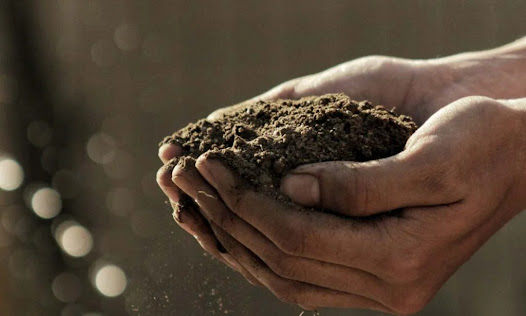Why Is Non-woven Material a Better Option for Medical Products?
The demand for non-woven fabrics in the Medical field has increased tenfold. The non-woven material category is driving the medical products market over other medical textiles. Non-woven materials are rapidly growing into a key component for smart wound care products to create a moist wound healing environment with controlling vapor transmission, low skin adhesion and absorbency. These fabrics are proven to be superior products to woven materials in terms of adaptability, cost-efficiency, disposability and effectiveness.
With the improved manufacturing technology use, non-woven materials are now dominating the medical textile industry. There are a plethora of advantages non-woven materials offer to become a preferable option in the medical sector for items like a bandage, wound dressings, medical masks, surgical scrubs, and other healthcare products. Read on to know why non-woven materials are growing into use in the medical and healthcare sectors.
What’s the significance of non-woven fabrics in the medical sector?
Non-woven materials are referred to as sheets or web structures that are bonded together with the process of entangling fibers or filaments. This process can be formed mechanically, thermally or chemically. Here the fibers might be distributed randomly or in one direction. For attaining desired mechanical qualities, and elongation strength in non-woven materials, multiple layers can be implemented in the manufacturing process. In non-woven fabrics, the porosity is controlled using varied fiber density, orientation, diameter and additional mechanical processes.
With their unique properties, non-woven material is ideal for a wide range of medical applications. Some of the key characteristics of non-wovens that make them a better choice than their counterparts are high durability, resilience strength, low elongation, dimensional stability and quality processing to control porosity. Non-woven fabrics are four types: Spunbond or Spunlace, air-laid, dry-laid and wet-laid. There are several advantages of using non-woven fabrics over traditional woven or knitted fabric, making them an excellent option for medical products. Some key advantages are:
• Provide barrier protection
One of the significant characteristics of non-woven fabrics in medical applications is their ability to offer superior barrier protection to minimize contamination. A non-woven material is designed to be impermeable to create a barrier against fluids, viruses and bacteria. Hence, it is highly preferred for surgical gowns, drapes and other medical products requiring tough protection against bodily fluids and other contaminants.
• Highly breathable
Although there can be multiple layers in non-woven materials to make them impermeable, these are lightweight, tough, yet elastic fabrics that are breathable. So it allows air to circulate through the material. A medical mask that is made with non-woven material makes it comfortable to wear for extended periods of time and reduces the risk of heat stress.
• A cost-effective solution
Unlike traditional woven or knitted fabrics, non-woven fabrics are rather cost-effective. With the advanced production technology used, the non-woven material manufacturing speed can be much faster than that woven counterpart, up to 100 to 400 yards per minute.
Due to the high production speed and lower steps, non-woven fabrics cost much less compared to woven or knit fabrics. Hence, it makes an ideal option for medical professionals who are looking to reduce costs without sacrificing their service performance and quality.
• Highly disposable
Non-woven fabrics are highly disposable, which can help with preventing the spread of infection. They are absolutely not designed for reuse, eliminate the need for cleaning and sterilization and make it a more convenient option for medical professionals. This is excellent for handling the spread of contaminants and minimizing infection. Some common disposable items are single-use caps, head covers, scrub suits, shoe covers, face masks and gowns.
Major applications of Non-woven materials
• Wound Care
Non-woven material is best used for wound care medical products such as bandages and dressings, wraps, plasters, wadding, absorbent pads, etc. Due to their excellent absorbency, non-woven materials help in managing exudate and promote healing.
• Using as Barriers
Another primary function of non-woven material is to manufacture barrier products to prevent exposure to bodily fluids, dust, gases, viruses, bacteria, and other contaminants. Hence, they are widely used in medical and industrial settings. It is ideal to use in face masks and other protective clothing.
• Compressor
Non-woven material is used for stabilizing, containing and aiding or restricting movement in certain body parts. The high elastic efficiency of the materials helps produce medical items to exert direct compressive forces in the desired area. Such items can be tights, support hosiery, wraps, sleeves, and socks.
Conclusion:
Non-woven fabric materials are very helpful in protecting against biological agents, which is why they are extensively used in the medical sector. They offer critical safety properties against diseases and infections. Today the world has many multi-drug resistant strains of viruses and bacteria.
Using these non-woven fabric materials like dry laid, air laid, wet laid, etc., can be extremely helpful in preventing cross-contamination and infection spread, especially across the medical and surgical environment. These fabric materials are only good for one use and are disposed of to avoid the spread of contaminants. With its growing market opportunity, medical manufacturers need to overcome the regulatory and technological challenges to produce high-quality but cost-effective non-woven fabrics on a large scale for medical and other sectors.


Comments
Post a Comment